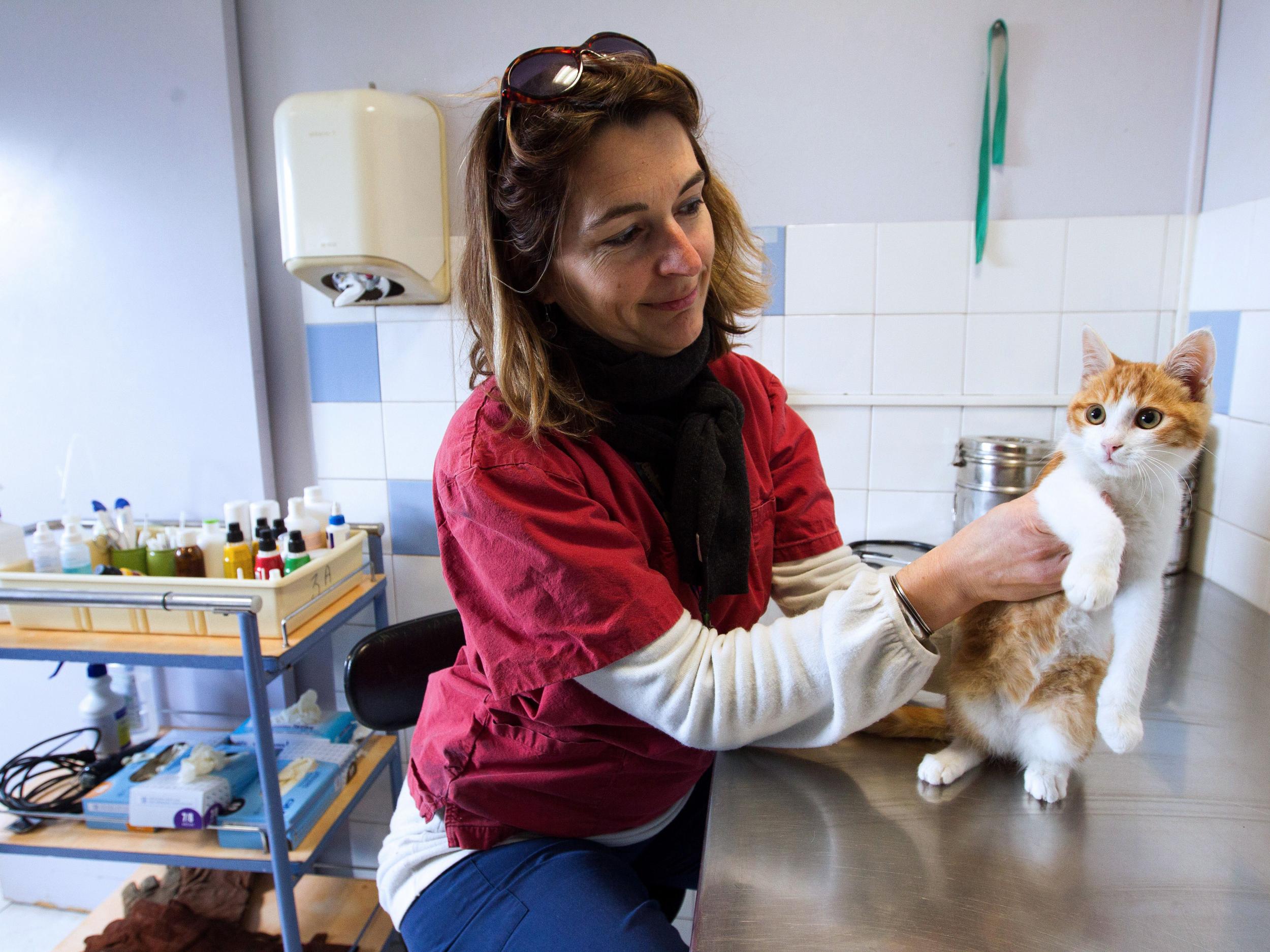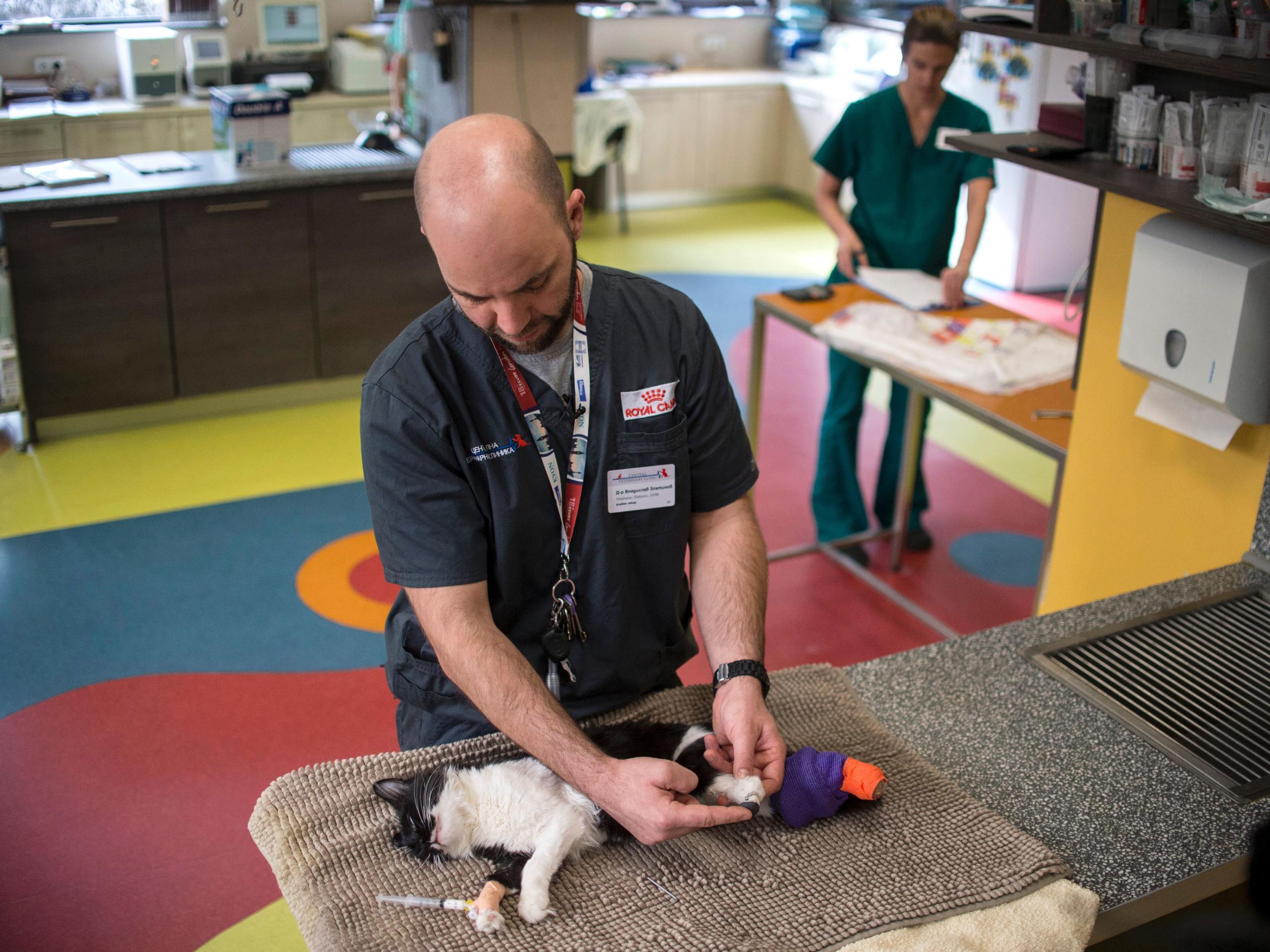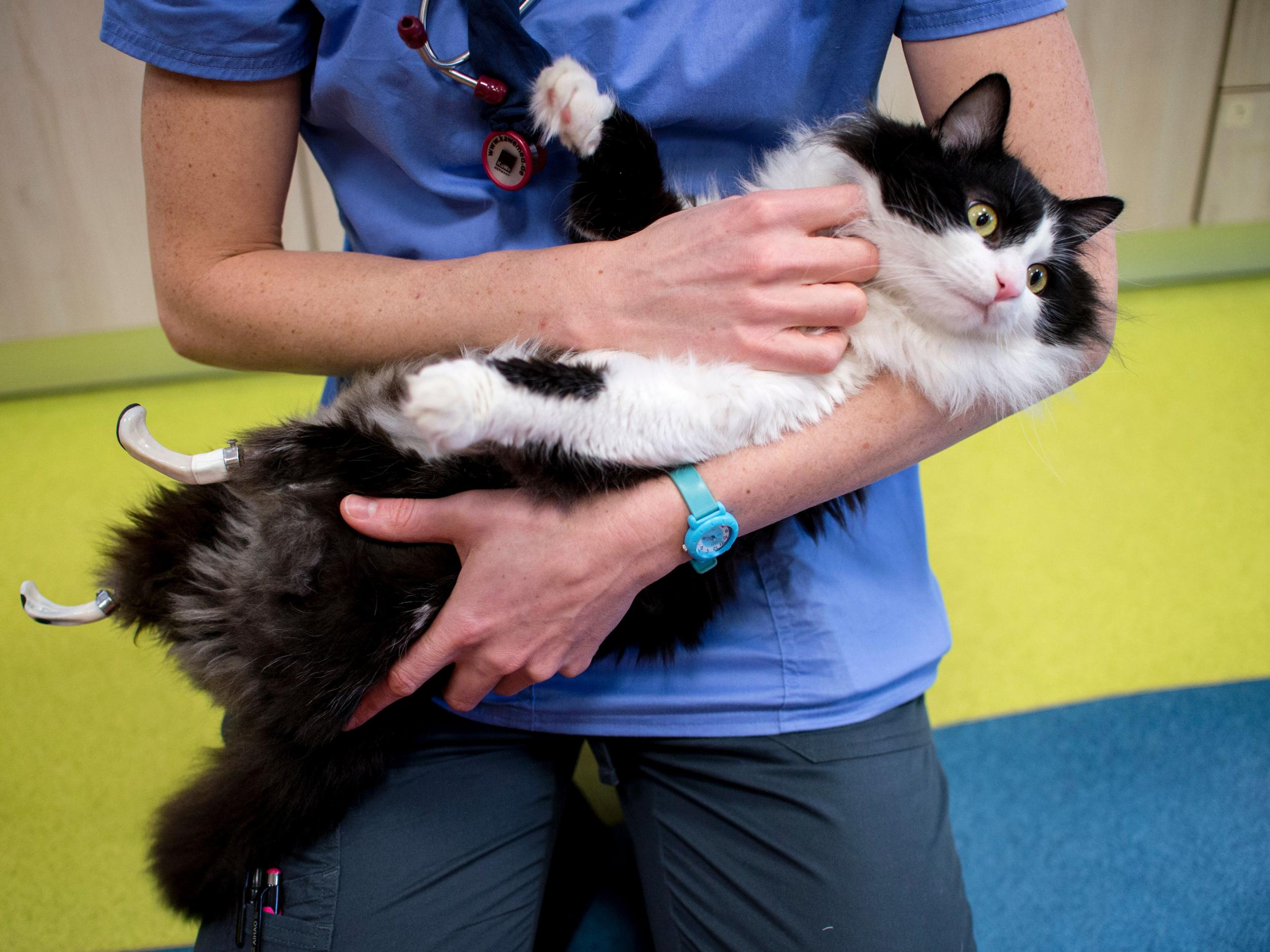The vet whose mission it is to make cats feel less terrified
The cacophony of noise inside a veterinary surgery is stressful place for felines. But Marie Carter meets one vet who is changing this

Your support helps us to tell the story
From reproductive rights to climate change to Big Tech, The Independent is on the ground when the story is developing. Whether it's investigating the financials of Elon Musk's pro-Trump PAC or producing our latest documentary, 'The A Word', which shines a light on the American women fighting for reproductive rights, we know how important it is to parse out the facts from the messaging.
At such a critical moment in US history, we need reporters on the ground. Your donation allows us to keep sending journalists to speak to both sides of the story.
The Independent is trusted by Americans across the entire political spectrum. And unlike many other quality news outlets, we choose not to lock Americans out of our reporting and analysis with paywalls. We believe quality journalism should be available to everyone, paid for by those who can afford it.
Your support makes all the difference.If you’re a decent cat owner, chances are you’ve seen the inside of a veterinary practice before, probably on many occasions. Chances are also that you’ve been worried that your beloved cat finds the whole experience horribly stressful. Not only because he’s ill or injured, or even just waiting for their annual health assessment, and about to see the vet, but because, for cats, the average vet practice can be a terrifying place. The cacophony of canine noise, barking, whining and clawing, can send a cat’s cortisol stress hormones soaring through the roof. That’s why many cat owners resist taking their beloved cat to the vets in the first place, preferring to see if they get better, rather than putting their poor puss through such a stressful ordeal. That approach is clearly not in the cat’s best interests.
Sitting in his carrier in a busy waiting room, Felix the tortoiseshell moggy cat, was on hyper alert. Two large dogs were eyeballing him only yards away and, normally, he’d be running now, if not confined to his temporary bed, left leg immobile due to a road accident a week ago. His owner Pam is uncomfortably aware that Felix is stressed, but figures that this is the vets and he should now be used to being surrounded by curious canines. She’s unaware that just down the road there’s a cat-only clinic that could be much better for her puss, and her own peace of mind as a cat carer. It’s the London Cat Clinic (thelondoncatclinic.co.uk), based in Bermondsey, which opened its doors in May this year as a response to the concerns of Pam, and other cat owners like her, who are deterred from bringing their pets to the vets because the average practice you encounter on every high street just seems way too dog-centric.

I was delighted to catch up with its owner Dr Jeremy Campbell BVSc, MANZCVS (Feline Med) RCVS Advanced Practitioner (Feline Medicine) MRCVS, an eminent cat expert, who was moved to launch the London Cat Clinic to cater for this real need among the cat-owning population. Dr Campbell is passionate about cats and has dedicated the latter part of his career to learning about, and providing expert medical care to felines. His experience over the years has taught him that cats respond better when cared for in an environment designed and built around their specific needs. Dr Campbell’s love of cats first took off when he moved to London 20 years ago from his native New Zealand to run a small animal practice which turned out to be 75 per cent cats. The rewards and challenges of caring for and healing such a subtle animal saw his professional and personal feline interest become a driving focus.

He says that a simple observation alone by anyone visiting a typical vets practice will show that it’s a terrifying place for cats.
“Simply put, cats like to control their home environment and being taken out of this without any preparation or consideration makes them nervous and increases anxiety which puts their self-preservation mode in overdrive,” explains Dr Campbell.
“Cats are exquisitely sensitive to changes in their environment, so following on from the trauma of the carrier and trip they are greeted by a lovely friendly Labrador. Unfortunately, while the dog’s owner thinks the dog is being ‘friendly’ the cat and the cat owner don’t feel the same way. Imagine that being hyper-stressed out already then, a large potential predator comes up to your only route of escape and tries to ‘eat’ you. Self-defence now at Defcon 3!
“Our clinic is quiet, we release a synthetic calming pheromone into the air. This is the same as the pheromone that cats release from the glands around their mouth, neck and tail when they are ‘bunting’ or rubbing up against objects that mark their home territory. It sends the olfactory signal that ‘there is no need to be anxious, this place is fine’.”
Dr Campbell and his team are acutely aware of the issues involved in the stressful business of transporting a cat to the clinic, so they will first give the cat owner advice over the phone, email, website, or even via video link to help make the trip to the vet’s calmer and more reassuring for both them and their pet.
Dr Campbell says: “A less stressed or anxious owner has a positive effect on their cat, making them calmer. If we have a cat that is relaxed they are more amenable to a complete examination with appropriate responses to our tests and manipulations.
“A stressed cat will be tense, be more likely to hide pain responses or resort to fear-aggression responses, which can stop the examination completely, requiring sedation or general anaesthesia, which does mean we don’t get the conscious responses and is not without risks despite the up-to-date techniques we use.”

Not only does the cat-only environment help a cat (and owner) settle and be less stressed, but a clinic that deals only with the one species has time and resource to be even better at what they do. A feline vet like Jeremy has done extensive years of additional training and exams in feline medicine, supplemented by advanced courses in ultrasonography, radiography, endoscopy and laparoscopy.
Dr Campbell explains: “A feline-only practice is aware that cats are not small dogs their biology is different. Cats have different specific dietary requirements, they react and metabolise drugs differently, we are aware of what combination works and what don’t.
“The veterinarian that deals only with cats is aware of the subtler signs of disease like sleeping in an unusual place, sleeping more or less, altered interactions with the owners and other cats. These changes are often so small that owners haven’t considered them an issue until they are raised by the vet.”
He adds: “Our staff are all cat-owners and know there are specific, gentle ways that we can handle our patients to ensure we are able to do as much with them – it involves a lot of large fluffy towels sprayed with the pheromone above – and quiet, unhurried movements. A cat that is manhandled out of the carrier and scruffed to the table is not going to be compliant now or next time – negative reinforcement complete and Defcon 2.”
Due to their small body size, cats are very prone to lose a lot of heat when they are anaesthetised, which can significantly delay their recovery on the day and also the resultant wound healing if surgery was performed. Dr Campbell, and his team, use circulated warm air blankets to cover patients throughout surgery, intravenous fluids heated to a suitable temperature, and monitor their vital signs, including blood pressure, to ensure any abnormalities are detected immediately and corrected. The clinic’s equipment, where appropriate, is developed for the size of patients and their metabolic requirements. The clinic also swears by its longer 20-minute appointment times (the average vets is 10 minutes) that helps to calm the patient by taking things more slowly.
This concept of keeping the patients warm and calm is continued into the clinic’s wards where the cages are made of a continuously moulded high quality polypropylene with tinted glass doors. These have the benefits of being warm, as they insulate heat, and quiet, as there’s no banging metal cages, and the nurses can observe their charges without disturbing them. Here too, there are pheromone diffusers to calm the patients.
What more could the average cat owner, and cat, to be frank, want? One senses that Dr Campbell’s mission is not quite complete. His ultimate ambition is to revolutionise a visit to the vets for all cats by advocating some simple changes. Even the average inner city, hard-pressed practice, he says, can help stressed cats by having a separate seating area for cat owners, a separate cat ward, pheromone diffusers, and, most of all, he says, an improved understanding of a cat’s needs.
Marie Carter is the editor and publisher of Pets Magazine (petsmag.co.uk)
Join our commenting forum
Join thought-provoking conversations, follow other Independent readers and see their replies
Comments